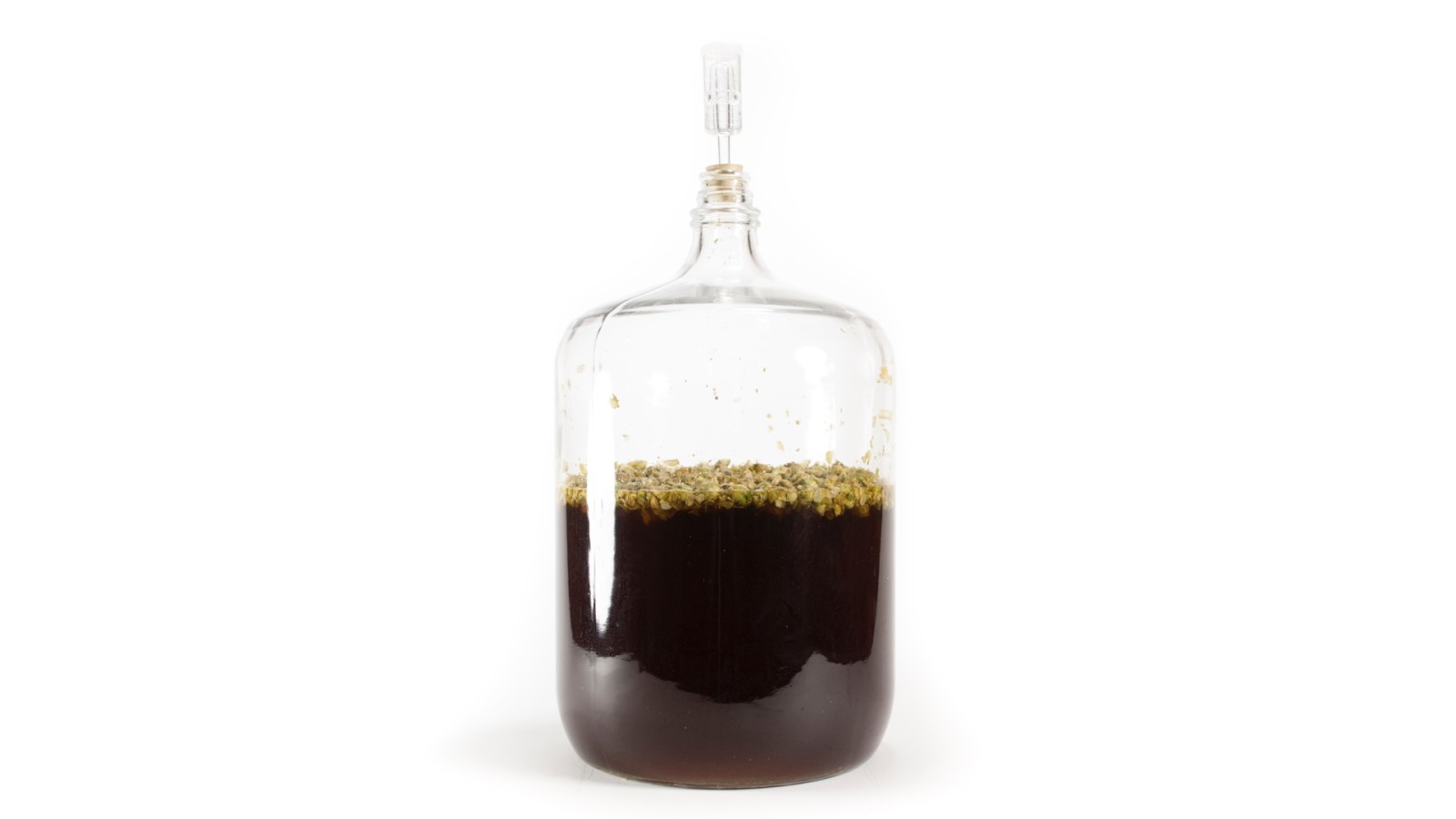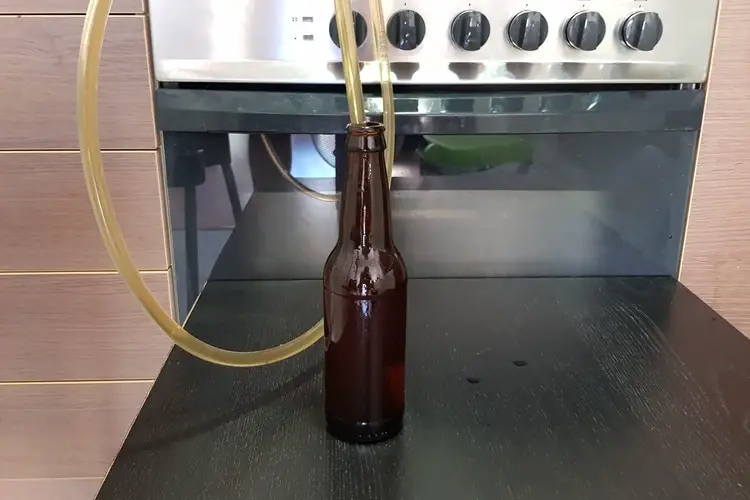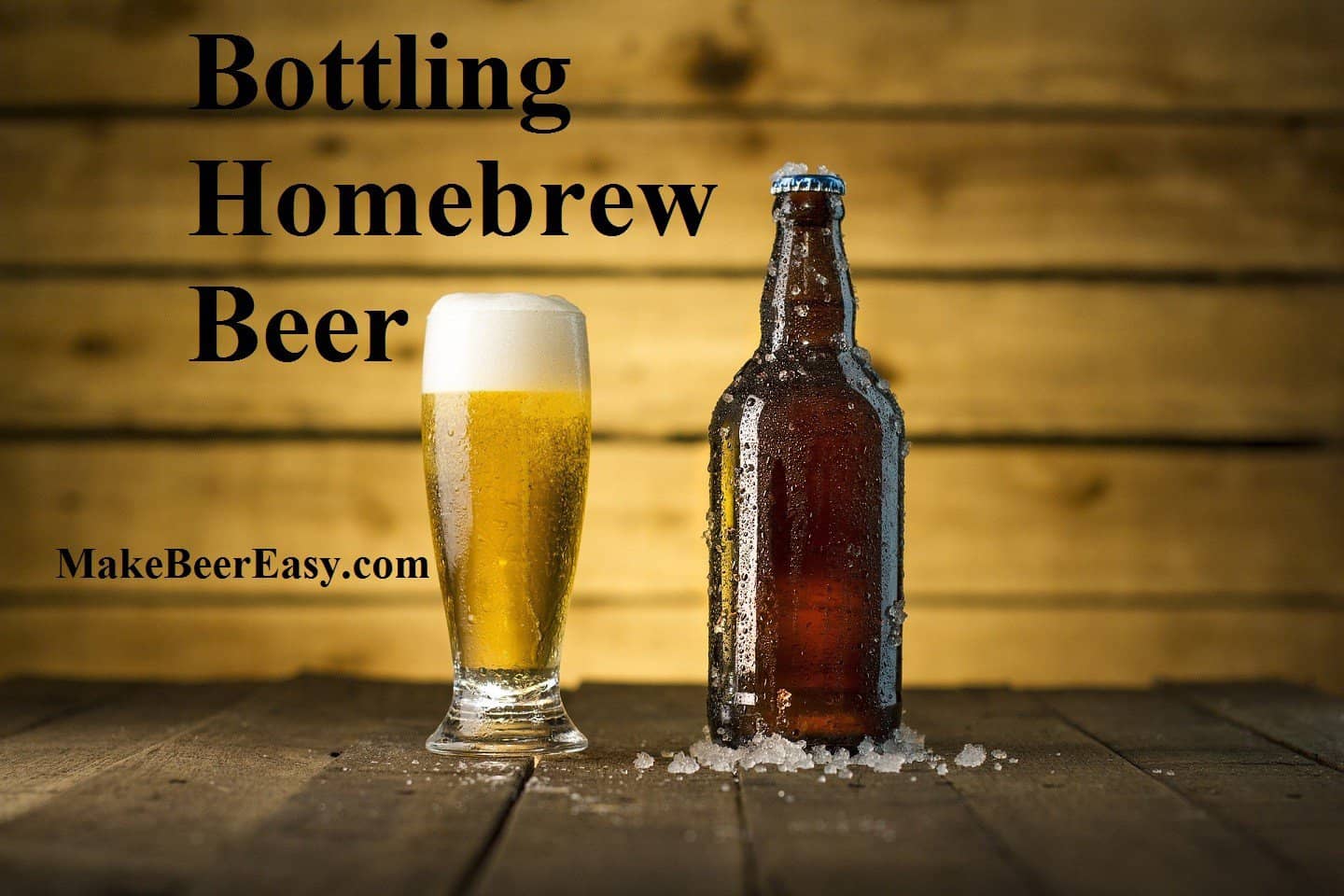
The 7 Best Home Brewing Kits 52Brews Buyer's Guide
Beer bottling involves more than simply pouring your brew into a bottle and sealing it shut. Understanding the science behind the process is key to achieving consistent and high-quality results. Factors such as temperature, yeast activity, and sugar levels all come into play during carbonation, ensuring that your beer is lively and well-rounded.

Bottling Your Beer American Homebrewers Association
Always make sure that your fermenter is at the proper temperature before you begin bottling. Make sure to use the right amount of priming sugar for the style of beer that you are bottling. Always use sanitized equipment and sanitize any surfaces that come in contact with your beer. Check the level of carbonation in the bottles after a few days.

Homebrew Beer Bottling Guide, Equipment Kit, and Tips Home Brewing Base
3. Rack beer to bottling bucket. Once your priming solution has cooled to room temperature, you can start transferring your fermented beer to the bottling bucket. To do that, you'll place your carboy—which contains the fermented beer—on the counter, and your bottling bucket on the floor, or on the open dishwasher door.

Why AnheuserBusch InBev Is Reportedly Seeking a New CEO The Motley Fool
Fill your bottles: The best way to bottle is to use a bottle filler attached by a short length of tubing to your bottling bucket's spigot. Fill your bottles so as to leave about 3/4 inch of headroom at the top of your beer bottle. Cap your bottles: Carefully place your cap onto the bottle, then position the capper atop both and with equal.

Imagen y foto Beer Bottling (prueba gratis) Bigstock
Push the bottling wand right to the bottom of the bottle, and keep it there until the bottle is almost full, leaving a maximum of one inch of empty space. The wand has a spring-loaded pin, and won't pour unless the pin is pushed-in, which prevents oxidization of the beer. Repeat, until all your beer is bottled.

Make Beer at Home. Part 3 How to Bottle Your Homebrew Frugal Family
It will condition and improve over time. I must admit that I brew not to preserve the beer but to enjoy it. Summary: How to Bottle Beer. In summary, follow these steps: Measure the final specific gravity. Thoroughly clean everything. Prepare the required priming sugar. Siphon the beer into the bottling bucket. Fill the bottles.

bottling beer, homebrew wednesday 71 YouTube
Put the tip of the beer gun into the bottle, purge with CO2 and pour away. As with bottling from the tap, fill the bottle until beer or foam just escapes, then cap. A couple of tips - always open and close the beer valve quickly to help prevent foaming.

Mr. Beer 740ml Deluxe Homebrewing 2 Gallon Beer Bottling Set, Reusable
Reuse Commercial Bottles. Most homebrewers gather bottles from other brewers by sharing or reusing commercial bottles. Purchase New Bottles. If your brew buddies are also out of bottles, you may need to purchase some at a local home-brew shop. How To Bottle Beer: Step-By-Step Guide. There are eight steps to bottling beer.

Beer Bottling Bottling an IPA homebrew beer Brew Insight
Homebrewing: hobby, lifestyle, obsession. Northern Brewer is on a mission to create something worth sharing, and that's why our home brew kits and beer brewing equipment is designed by homebrewers, for home brewers. Only quality beer making kits here. Northern Brewer has been in the thick of beer making since 1993, and we pride ourselves on.

Bottling A Better Beer With New Yeast Strains Best beer, Beer, Beer
Before you begin, make sure your equipment and bottles are ready to go. You'll need a bottling bucket (with a spigot), enough bottles for 5 gallons, bottle caps, bottle capper, an auto-siphon racking cane, a bottling wand and hose, sanitizer, cheap vodka, and of course, fermented beer and the appropriate amount of corn sugar.Once all of these are ready, follow these steps to bottle your homebrew.

Homebrew From Beginner To Advanced (Guide) Craft Beer & Brewing
From here, the basics of the bottling process should be pretty clear. Start by filling your sanitized bottling bucket with your freshly fermented beer. Add your priming sugar (more on this below), then snap on the lid and connect the tubing to the spigot on one end and the bottle wand on the other. Open the spigot.

Bottling Homebrew Beer BrÜcrafter
To begin we need to prepare a priming sugar addition to add to the beer so when it's bottled it achieves the correct level of carbonation, use the information laid out above to find how much priming sugar you need. Add the correct amount of sugar to a clean pan along with twice the amount of water to sugar, with the lid on, heat the liquid up.

What Happens if You Bottle Your Homebrew Too Early?
Bottling homebrew beer too early may lead to a build-up of carbon dioxide (carbonation), which in turn can lead to your bottle bursting from the pressure. This poses not only a safety hazard but destroys the homebrew you just spent weeks creating. Ensuring you bottle your beer at the proper time is a method to reducing this risk.

Bottling Home Brew Beer Everything You Need to Know 2023
We're bottling today! No one likes it but it's cheap and relatively easy to carbonate your homebrew the traditional way. I'll show you everything you need to.

Make Beer at Home. Part 3 How to Bottle Your Homebrew Frugal Family
The Right Time for Bottling Beer. The rule of thumb for a primary fermentation of homebrew is between 7 and 14 days. However, bottling beer too early is just one of many potentially disastrous homebrewing mistakes that can befall the unwary brewer. To hedge your bets, you can harness the power of science and measure your homebrew's gravity.

Top 5 Best Beer Bottle Fillers for Making Beer 52 Brews
Step 3: Assuming you have 5 gallons of beer to carbonate, in a small pot/vessel boil 5 oz (3/4 cup) priming sugar (or 1-1/4 cups dry malt extract) in 1 cup of water for two minutes and let cool to approximately room temperature (quick tip: you can quickly cool the small pot in a sink filled with about an inch of cold water).